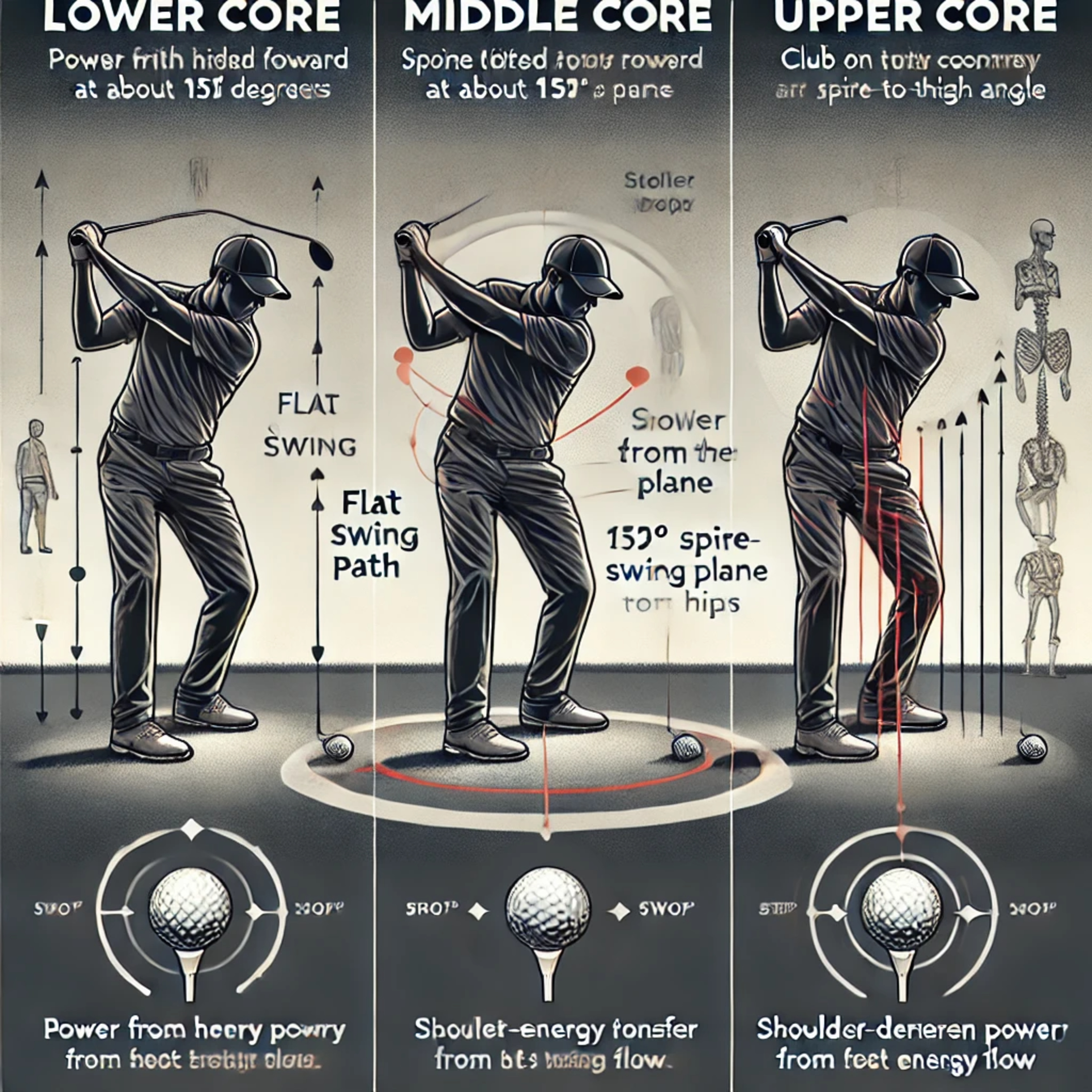#209 we've explored the three biomechanical swing profiles in golf
- Author
- Golf247.eu
- Published
- Wed 30 Apr 2025
- Episode Link
- https://podcasters.spotify.com/pod/show/puttin-pro/episodes/209-weve-explored-the-three-biomechanical-swing-profiles-in-golf-e320c0o
The Lower Core, Middle Core, and Upper Core. This chapter offers a practical summary, helping you identify your natural swing pattern and apply targeted adjustments to train smarter, swing more efficiently, and minimize injury risk.
The Lower Core Golfer – Power from the Ground Up
Lower Core golfers generate power primarily from the region between the navel and the hips. This swing type emphasizes lower body strength, stability, and a shallow, grounded swing arc. It begins with a wide stance, even weight distribution, slightly flexed knees, and a forward-leaning spine—forming a solid base for controlled rotation.
The grip features a “short thumb,” placing the club in the fingers for enhanced shaft lean and impact control. In the backswing, the hips remain stable as the torso rotates around them. The trail elbow stays tight to the body, and the club traces a flat path around the rear hip.
The downswing is triggered by a slight “pelvis drop” to store energy, followed by a forceful “pelvis lift” to accelerate the club through the ball. Balance is maintained throughout, with a strong, centered finish on the lead foot.
The Middle Core Golfer – Harmony in Motion
Middle Core golfers move as one cohesive unit. Power flows from a coordinated sequence of arms, torso, and legs, emphasizing rhythm and control.
This golfer sets up with a moderate stance, a neutral spine, and balanced weight distribution. The grip is neutral, aligning the hands symmetrically. The backswing begins with torso rotation, with the trail elbow staying compact and the weight shifting slightly to the inside of the trail foot.
The downswing starts with a subtle hip shift toward the target, followed by a synchronized rotation of torso and arms. The hands lead the clubhead through impact, with a slightly descending strike for irons and ascending for the driver. The finish is balanced and fully rotated, reflecting smooth energy transfer.
The Upper Core Golfer – Vertical Power and Precision
Upper Core golfers use upper body strength and shoulder rotation to drive a more upright, vertical swing. This style suits players with longer torsos and shorter arm spans and demands precision and timing.
The setup is tall with minimal shoulder tilt and a forward ball position. The grip—more in the palms with a “long thumb”—creates minimal shaft lean, supporting a steeper backswing plane.
Backswing rotation is synchronized between hips and shoulders, with minimal upper-lower body separation. The downswing begins with a slight hip drop, followed by an upward thrust as the lead leg extends. The club is accelerated vertically, producing strong upward speed and clean ball contact.
At impact, the hands are slightly ahead of the clubhead, with a subtle side tilt of the torso. The finish is upright, balanced, and fully rotated toward the target.
Final Thoughts – Discover Your Core Swing
Each swing type—Lower, Middle, and Upper Core—is biomechanically sound. Your goal isn’t to mimic someone else’s movement but to match your swing to your body’s natural design.
By identifying your core type, you can refine your mechanics, focus your training, and develop a more consistent, powerful, and sustainable golf swing.
